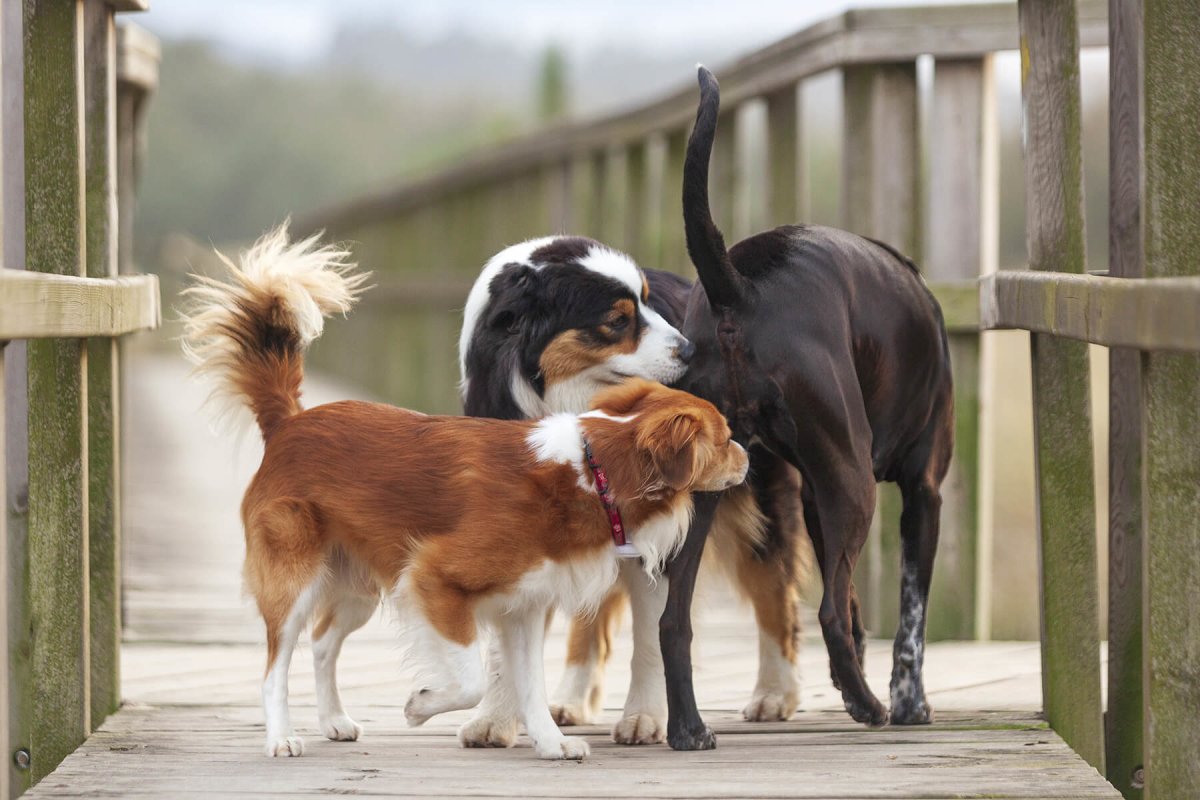Dental care for dogs is an often neglected topic. However, many dog owners fail to recognize the importance of healthy teeth for their pet. This is because dental care for dogs is not only important for their appearance, a lack of dental hygiene can also have serious consequences for your four-legged friend's health. Germs and bacteria can cause inflammation, attack the liver, heart and kidneys and lead to other illnesses in the animal. As a dog owner, you can actively help to prevent these, usually unnecessary, consequences of diseased teeth and promote your pet's dental health. In this magazine article, I explain what you need to bear in mind when caring for your four-legged friend's teeth and how you can get your dog used to brushing.
Table of contents:
The effects of bad teeth in dogs on their health
Many dog owners underestimate the importance of active dental care for their pets. However, problems with bad and diseased teeth can not only be limited to the mouth area of the animal, but can also affect overall health. Dental plaque and tartar can cause gum inflammation in dogs and lead to loose teeth and even tooth loss in the long term. This is particularly unpleasant for your pet and restricts their natural well-being.
However, bad teeth can have far more serious consequences. Permanent tartar often leads to inflammation of the tooth bed, which in the worst case can affect the jawbone. In addition, germs and bacteria can penetrate further into the organism and damage the animal's organs, leading to further serious secondary diseases.
But what are plaque and tartar actually and how does the annoying plaque form on the dog's teeth?
Plaque and tartar in dogs - How does dental plaque develop?
Dental plaque is the culprit behind many dental problems in animals. In most cases, it is the starting point for tartar, gingivitis and periodontitis. Plaque is formed after eating by food residues, germs and bacteria. The barely visible film sticks to the teeth and can multiply unhindered without regular dental care. If the plaque is not treated and removed for a long time, plaque and saliva minerals form tartar. No amount of brushing will help. This hardened mass of bacteria can only be removed by a dental cleaning by a vet. The removal of tartar in dogs must be carried out under anesthetic. This is a risk that should not be underestimated, especially in older or weakened animals. You should therefore remove the plaque regularly to prevent tartar build-up at an early stage.
How do I recognize tartar in dogs?
Tartar in dogs can be recognized by dark grey to black solid deposits on the teeth. They are very stubborn and cannot be removed by simply brushing the teeth. Tartar is often accompanied by an intense mouth odor. This odor is caused by bacteria that permanently feed on the food residues and produce strong-smelling excretions. Intense bad breath in dogs is therefore the first sign of plaque and tartar.
Further signs of plaque or tartar can be observed on the gums of the four-legged friend. The gums around the tooth may be reddened or even bloody. Then the bacteria have already penetrated the gums, resulting in inflammation of the dog's gums (gingivitis). If the tartar is already advanced and inflammation has developed in the mouth, the dog usually shows a change in eating behavior. It shifts its chewing to a different side and avoids certain biting positions. Solid chews, bones or even dry food are avoided. Your four-legged friend may also appear lethargic and listless.
Preventing dental disease and tartar
The best way to prevent dental disease and tartar in dogs is with regular dental care. Unfortunately, there is no way around this important prophylactic measure. We know that from us humans too.
To make dental care easier, there are now lots of products to help. From chew balls with Denta-Snacks and chew bones to Dentasticks and mouthwash for dogs. Food additives such as seaweed meal have also proven their worth in cleaning teeth. The flour helps to soften plaque, reduce tartar and inflammation and neutralize bad breath.However, the most effective method of preventing tartar in dogs is still good old-fashioned tooth brushing. However, not every four-legged friend finds this procedure so pleasant and will put up with it without resistance. That's why you should get your pet used to it from an early age and associate the procedure with something positive.

Brush teeth properly
You can use a special dog toothpaste and dog toothbrush to brush your four-legged friend's teeth. These usually have two brushes, one larger and one smaller. This allows you to vary depending on the size of the teeth. However, you have to be very careful when brushing with toothbrushes, as the rough bristles can injure the gums and cause bleeding.
A so-called finger brush is more suitable for brushing your dog's teeth. This finger toothbrush is either made of cotton or silicone. You simply put it on your finger, put some toothpaste on it and rub it lightly against your dog's teeth. However, don't forget the teeth at the very back of the mouth. At the end, you can reward your four-legged friend so that he associates brushing his teeth with something happy.
Teaching your dog to brush its teeth - how it works
Brushing your dog's teeth also needs to be learned - and this is sometimes not so easy. Many dogs shy away from someone messing around in their mouths. We humans are also rarely enthusiastic about the dentist.
To get your pet used to having their teeth brushed, you should start with dental care as a puppy. You can stroke his mouth a little with your hand, lift his lips from time to time and lightly rub his teeth and jaws with your finger. The first few times should not take too long and your rascal should be rewarded immediately afterwards. In the second step, you can put on a finger ring and proceed in the same way. Try to spread your dog's mouth a little again and again. And of course don't forget: reward, reward, reward! In this way, you can feel your way forward until your dog is able to brush his teeth without any problems - and who knows, he might even enjoy it.
Conclusion
Regular dental hygiene is essential to prevent dental problems in dogs. Brushing teeth removes pathogenic bacteria at an early stage and prevents tartar build-up. Therefore, brushing your dog's teeth should be just as much a part of their regular care as trimming their claws or brushing when changing their coat. Otherwise, if teeth are diseased, lengthy and nerve-wracking measures such as teeth cleaning under anesthesia, gum treatment and possibly even oral cavity rehabilitation would have to be taken.



